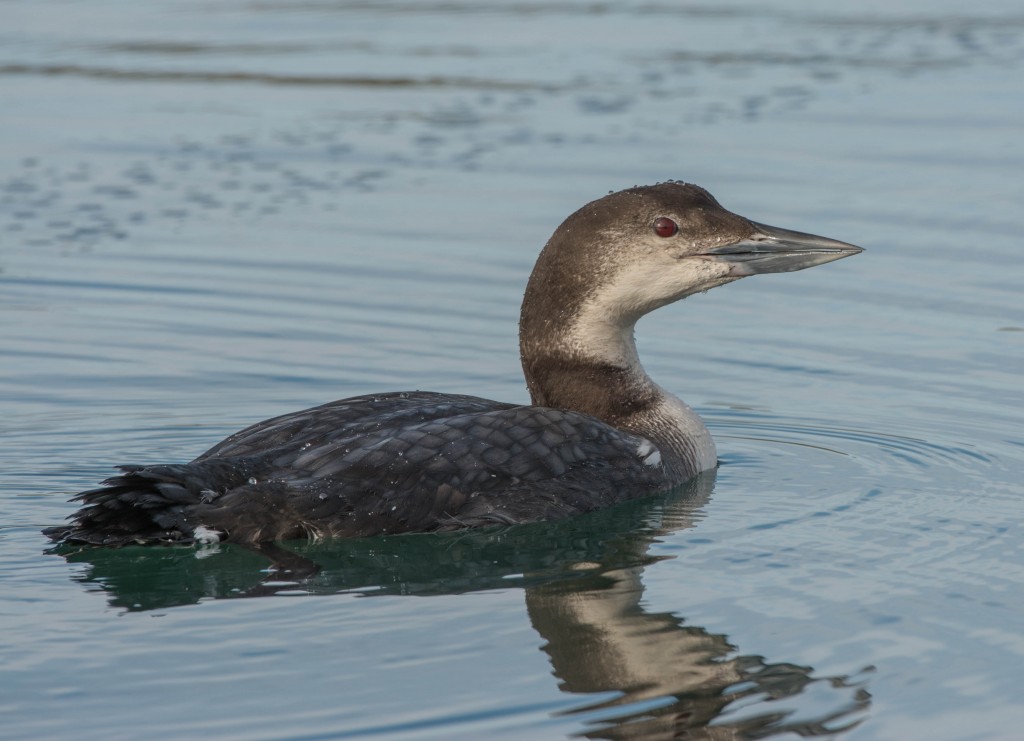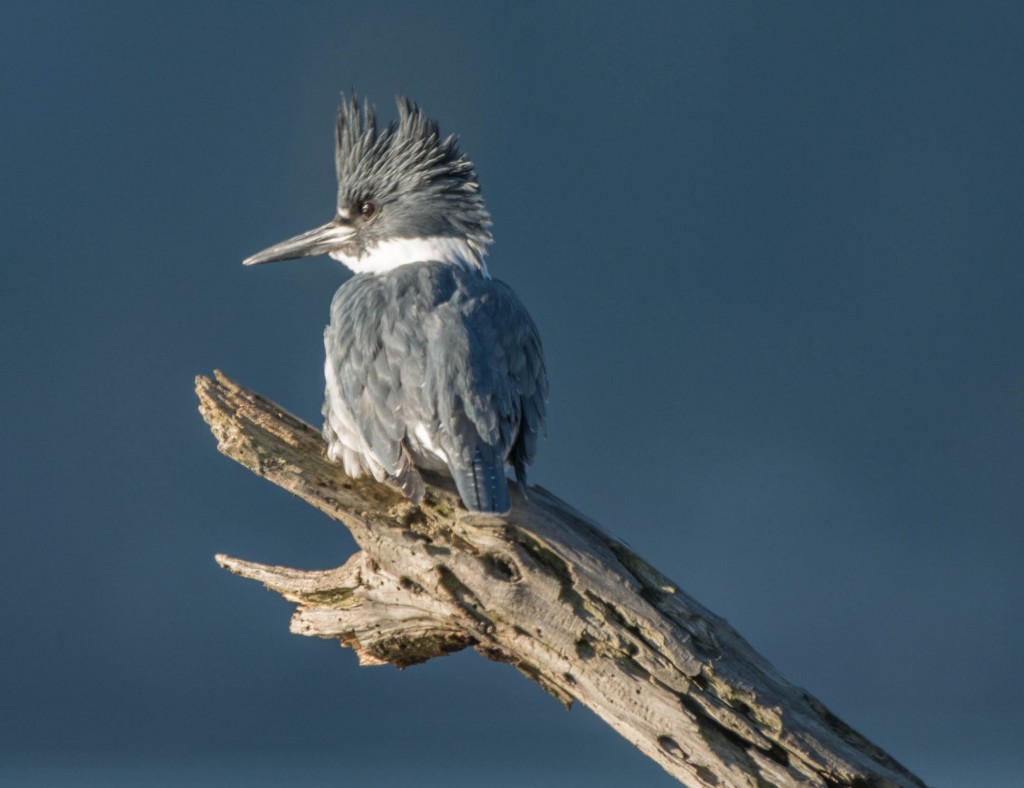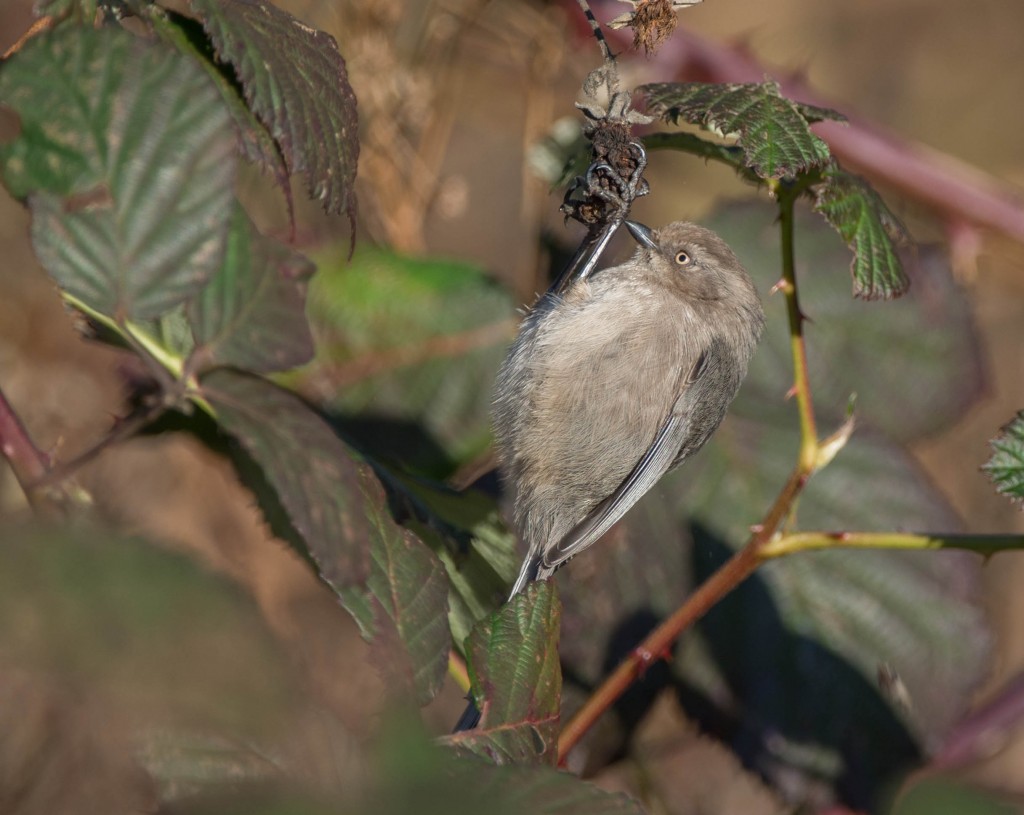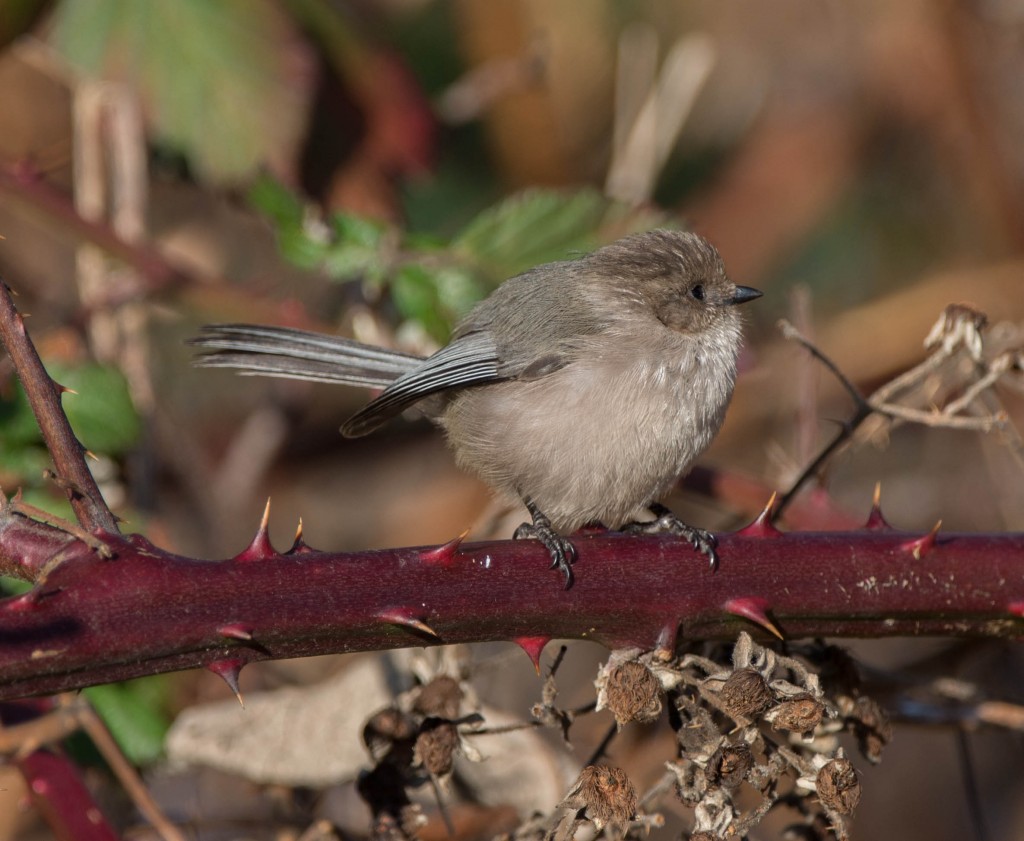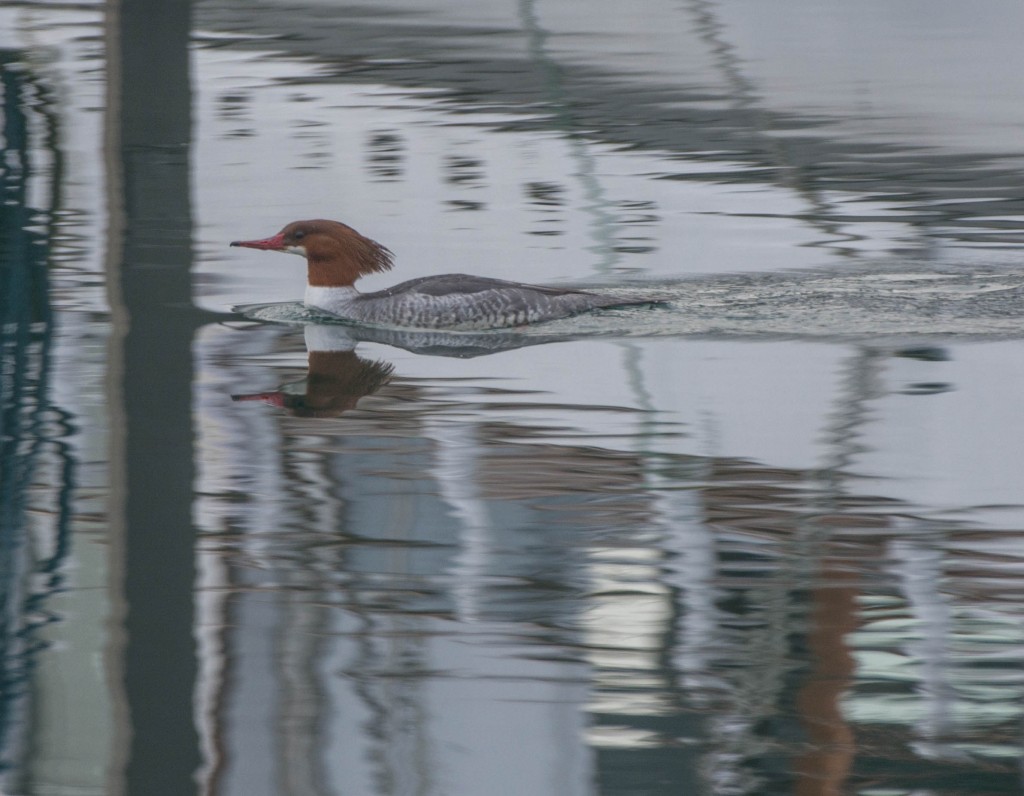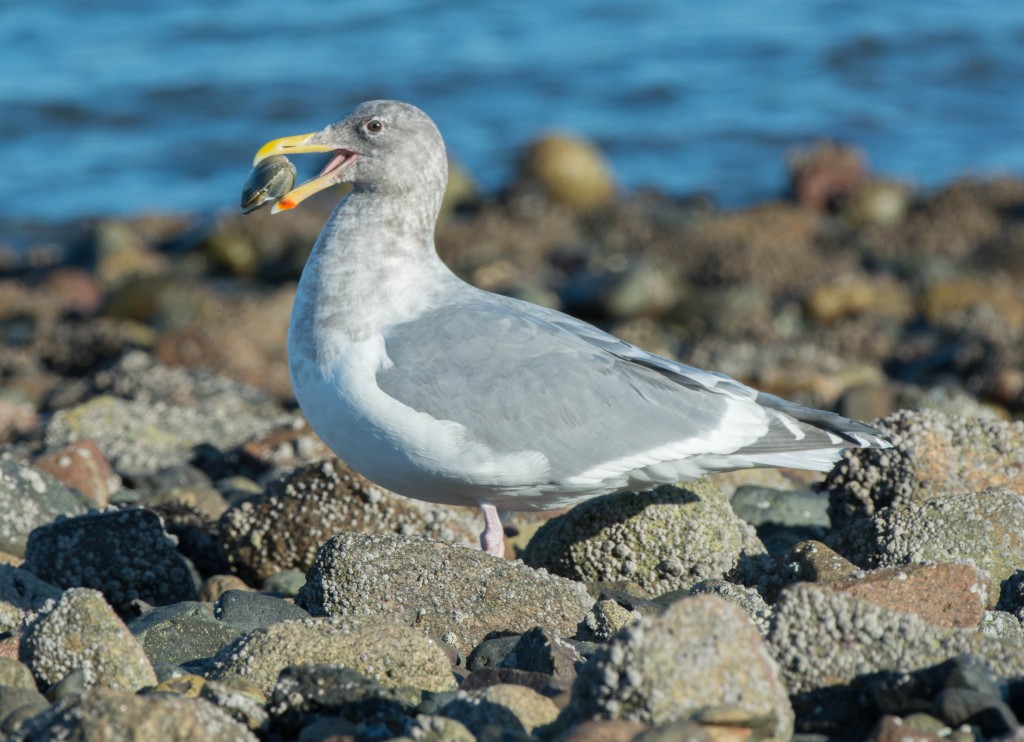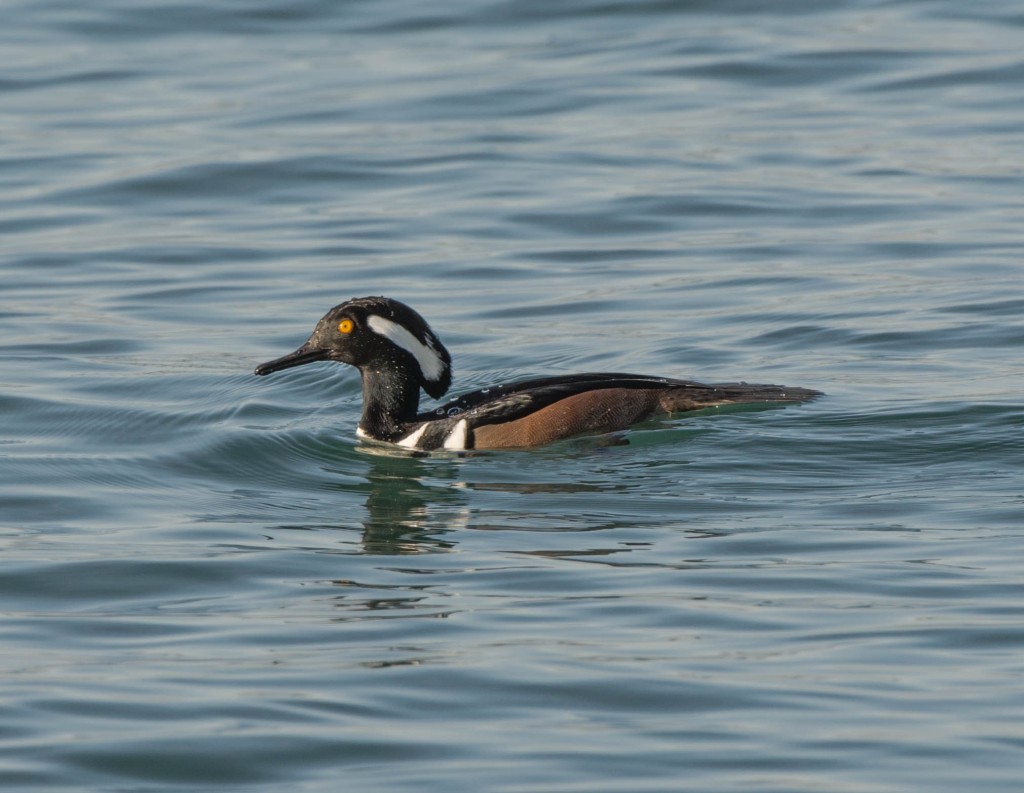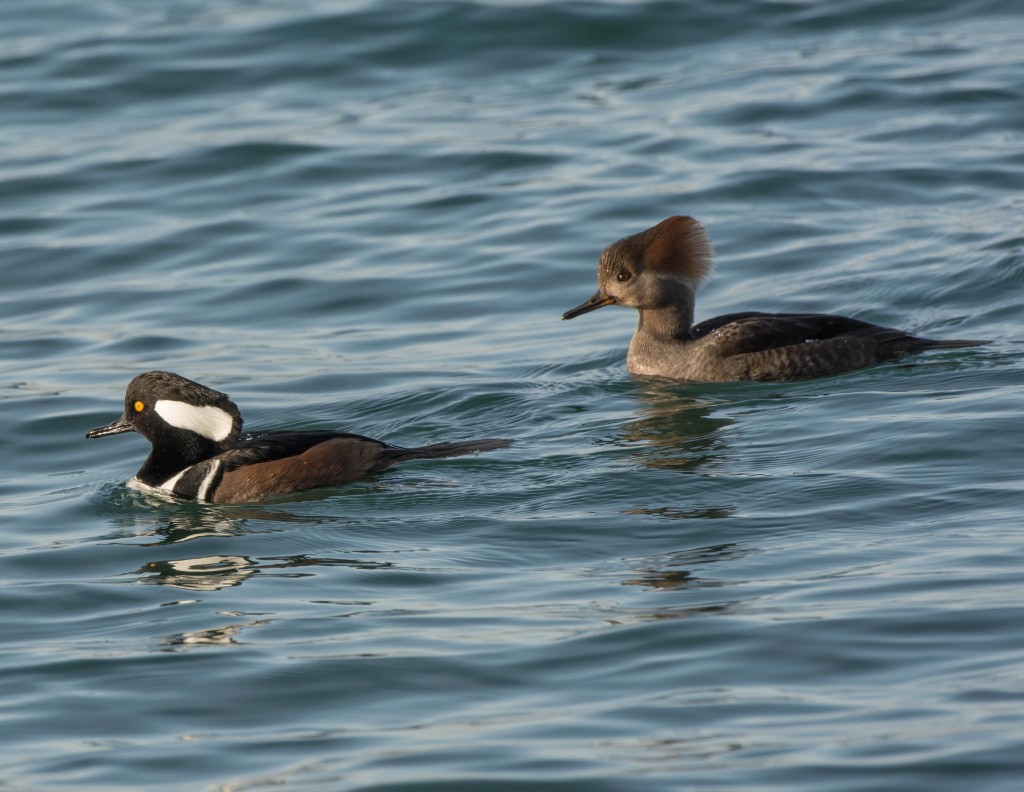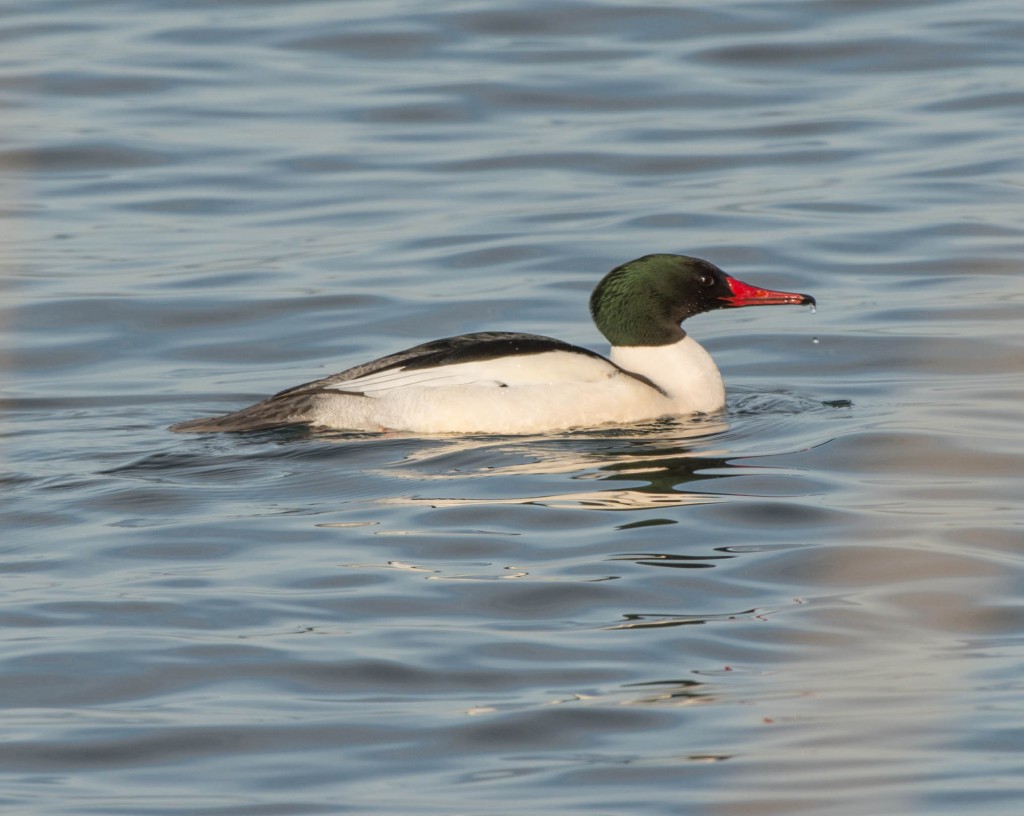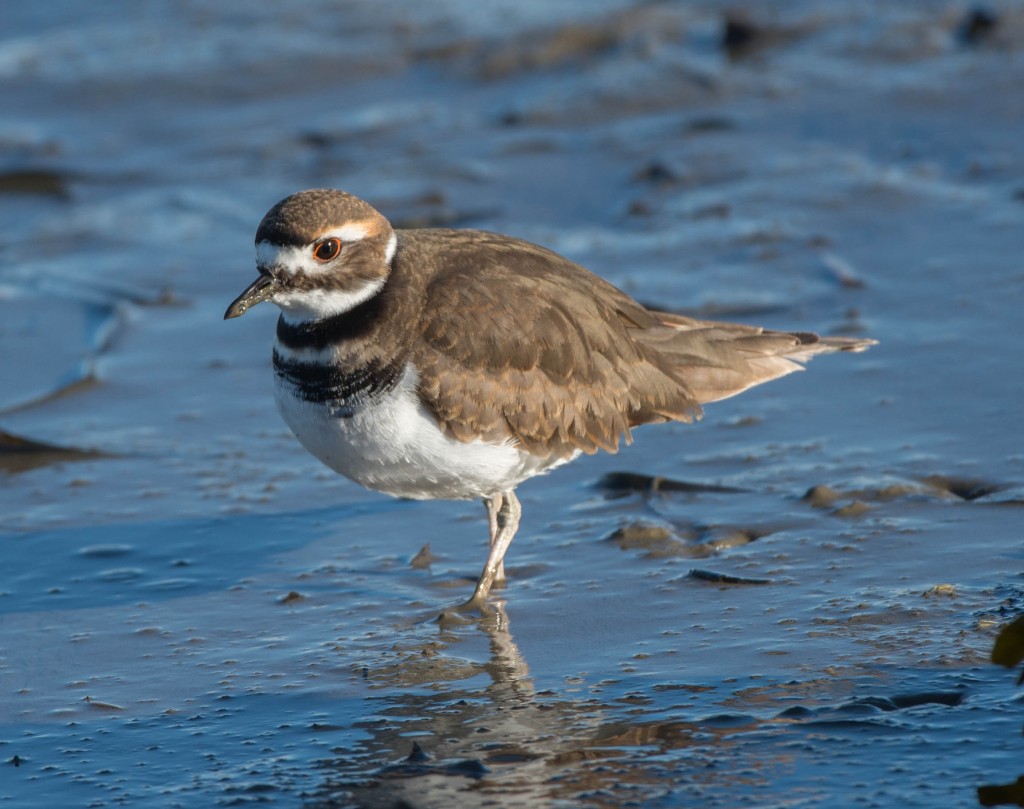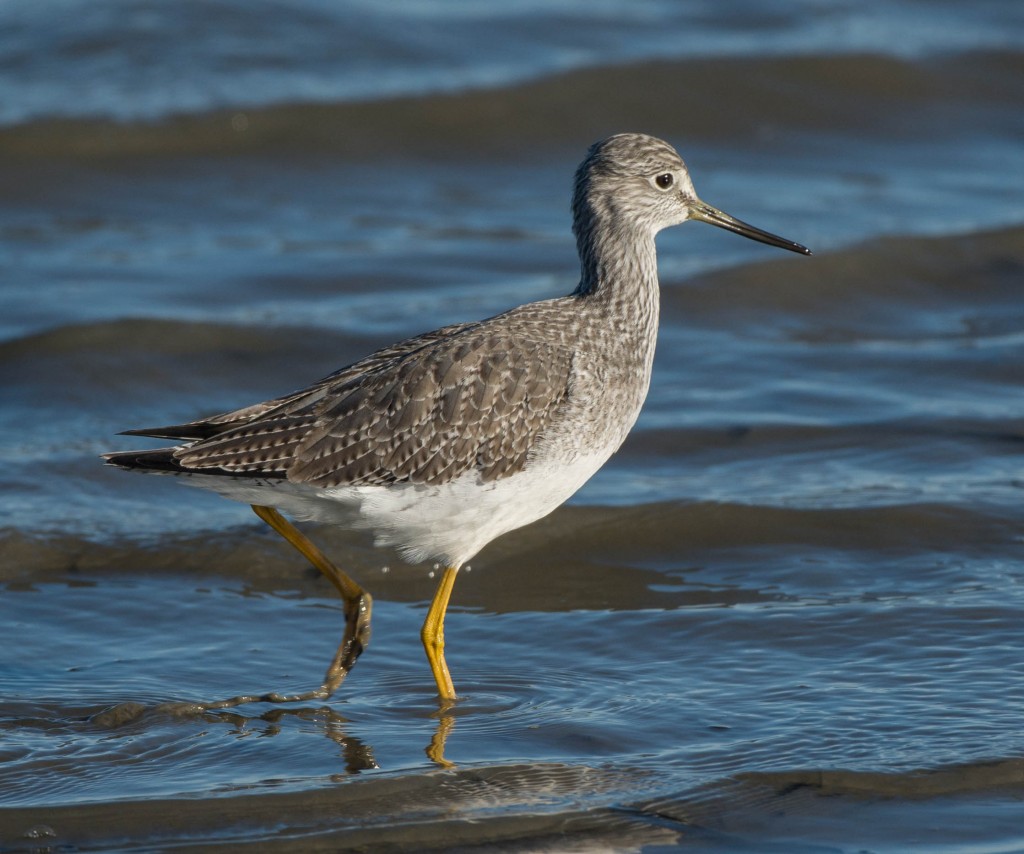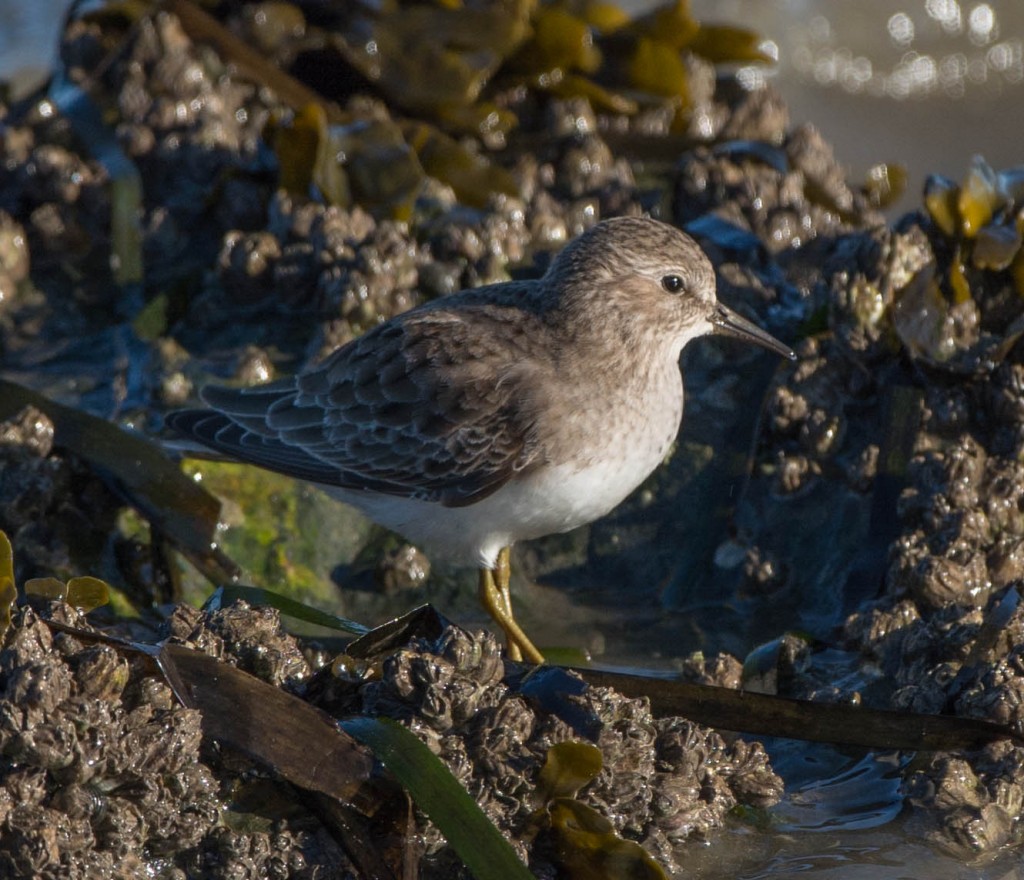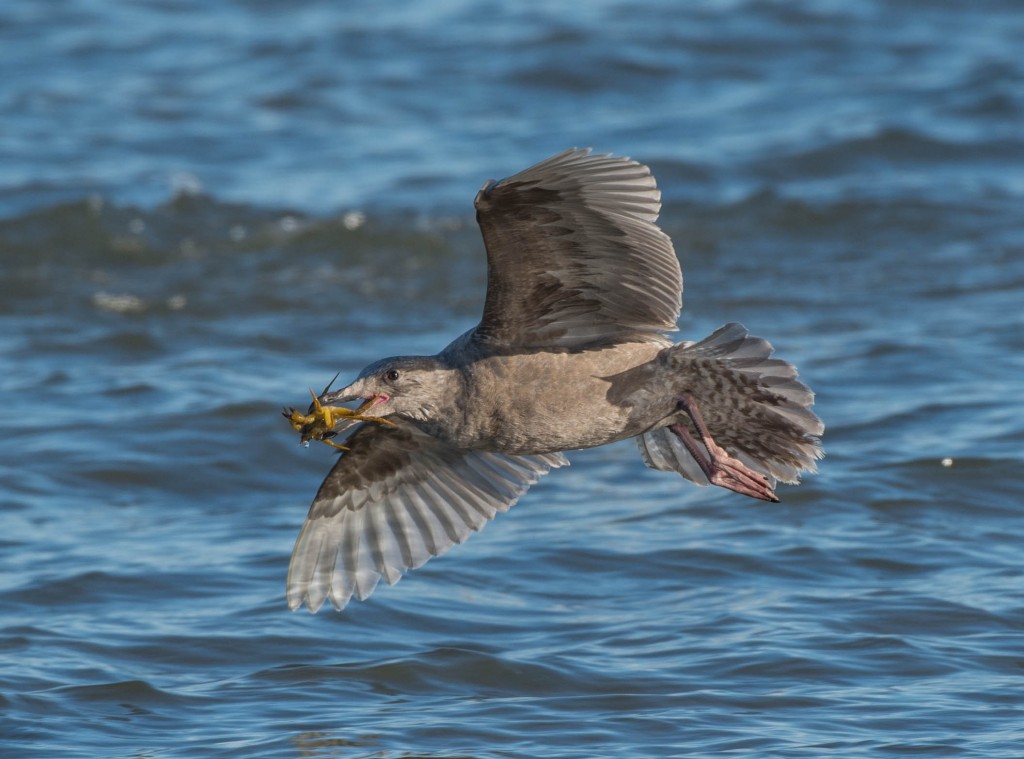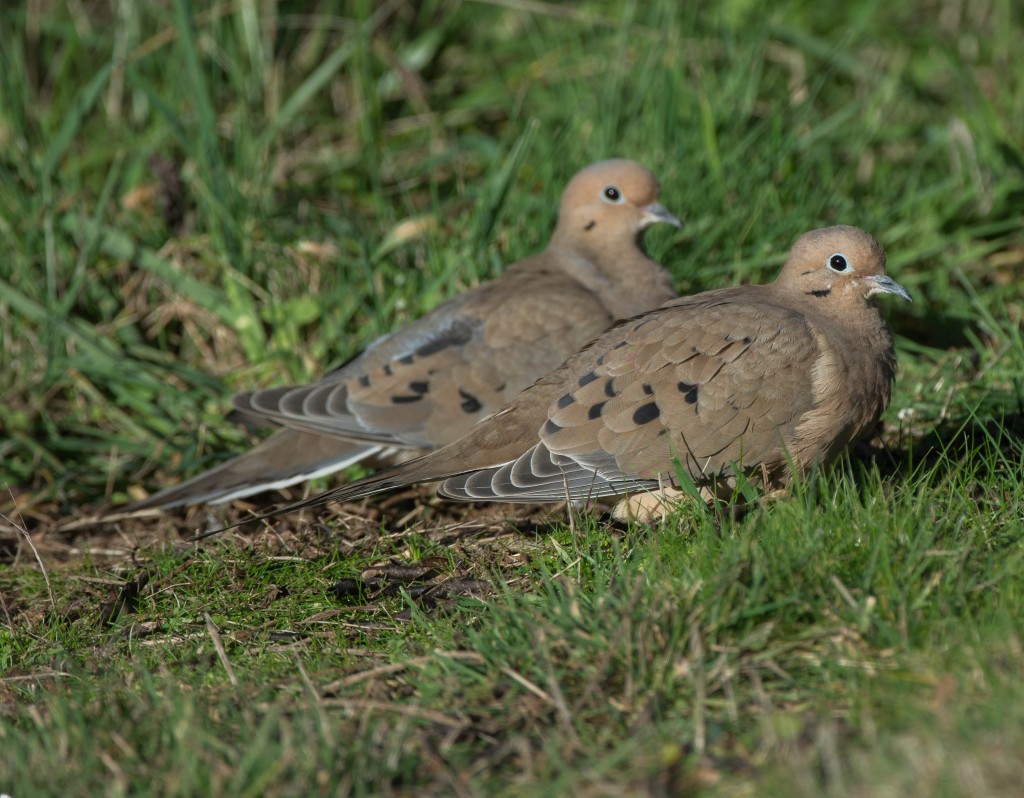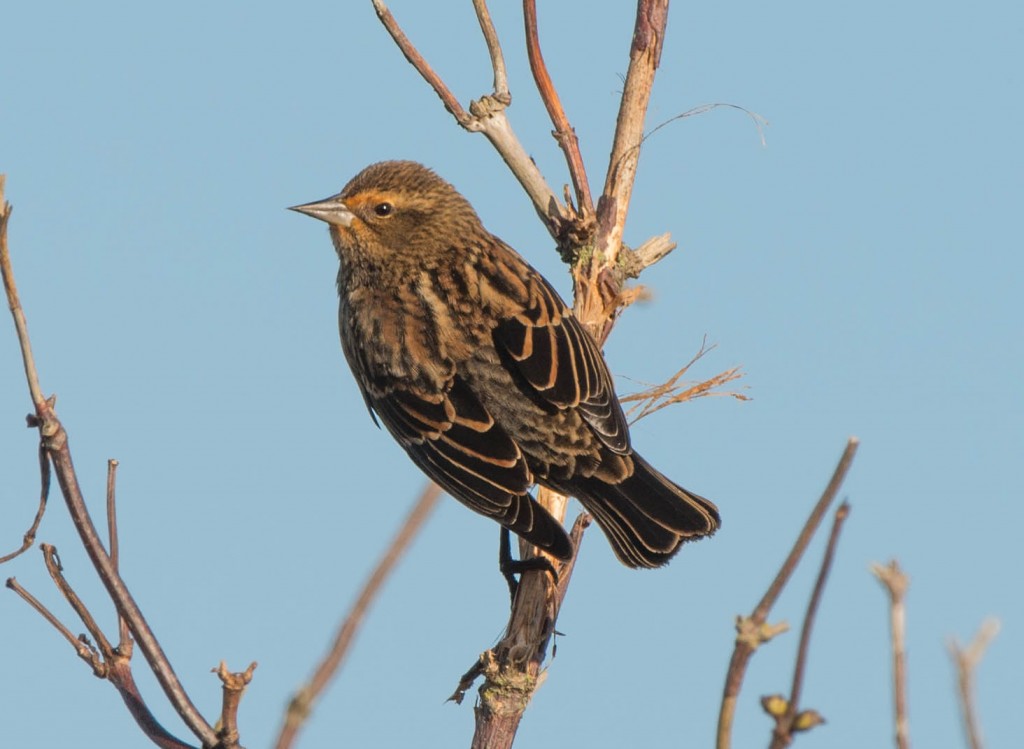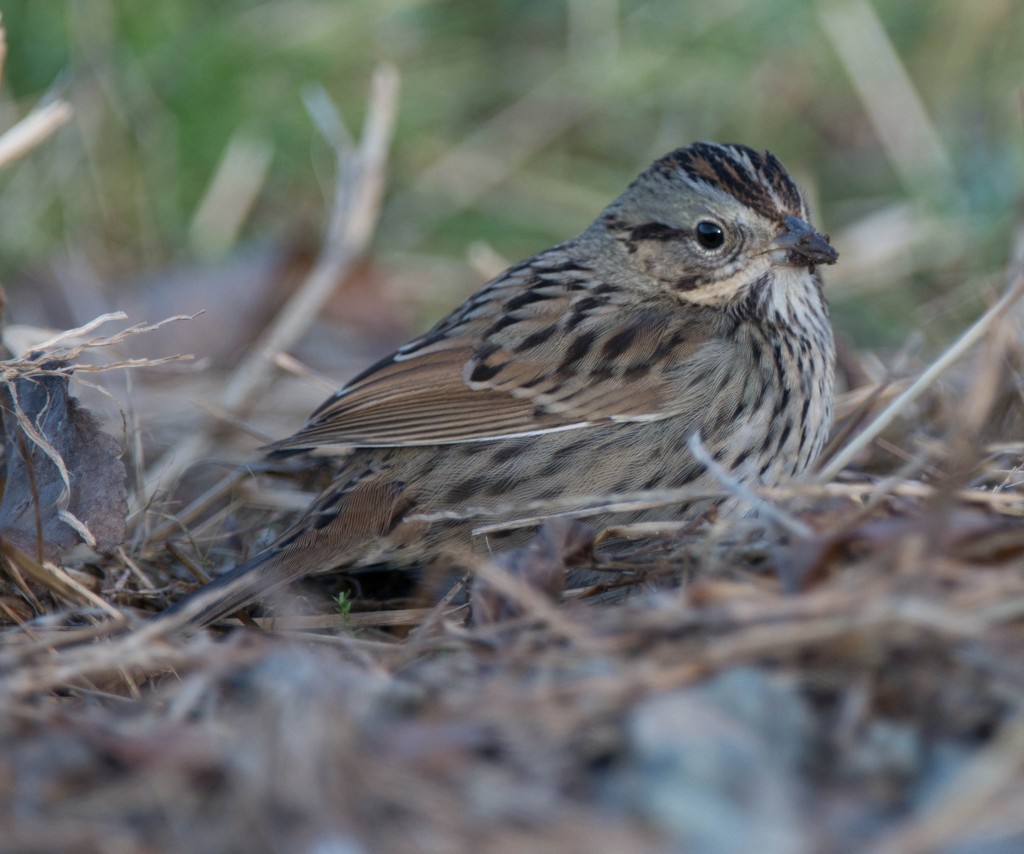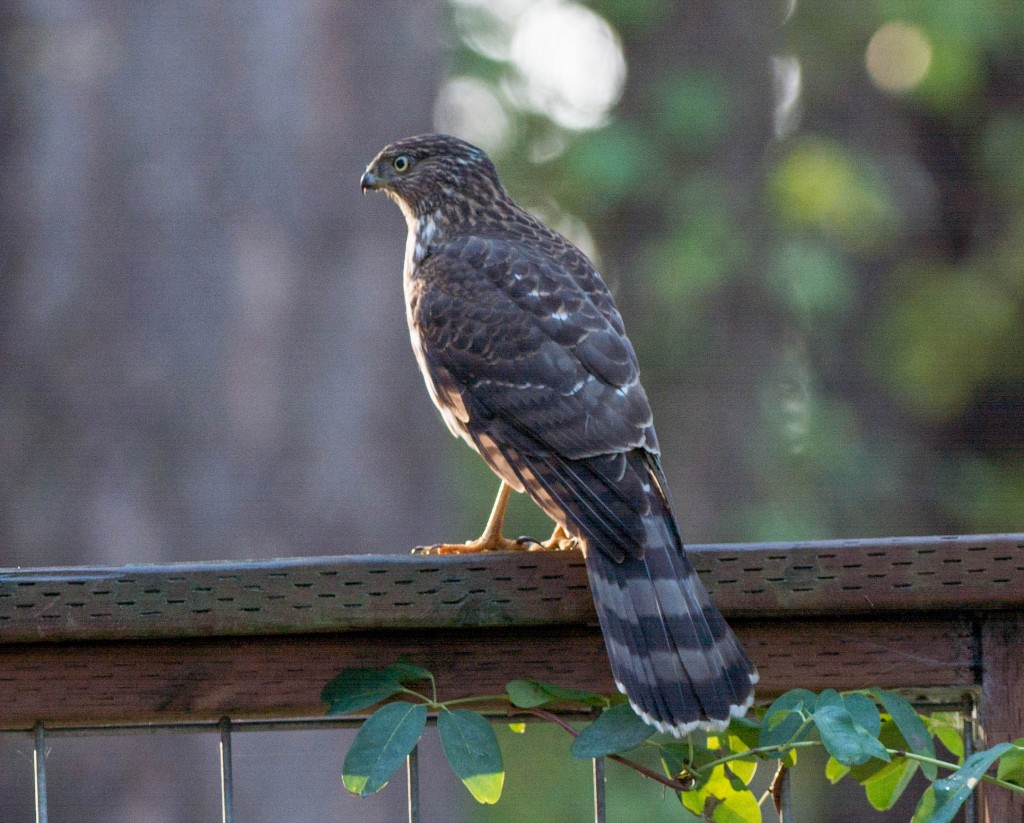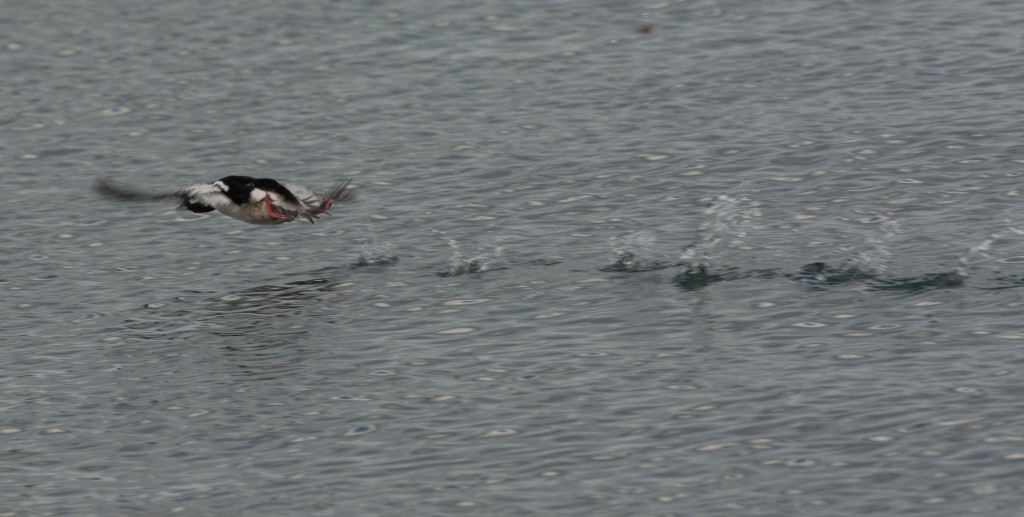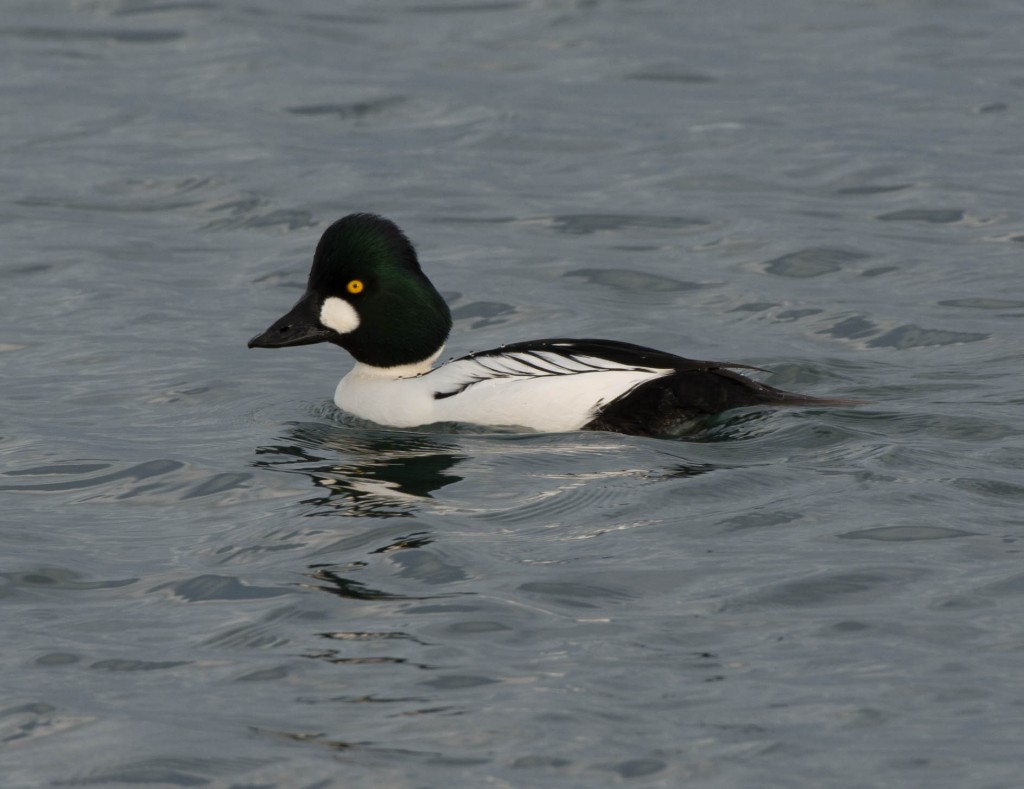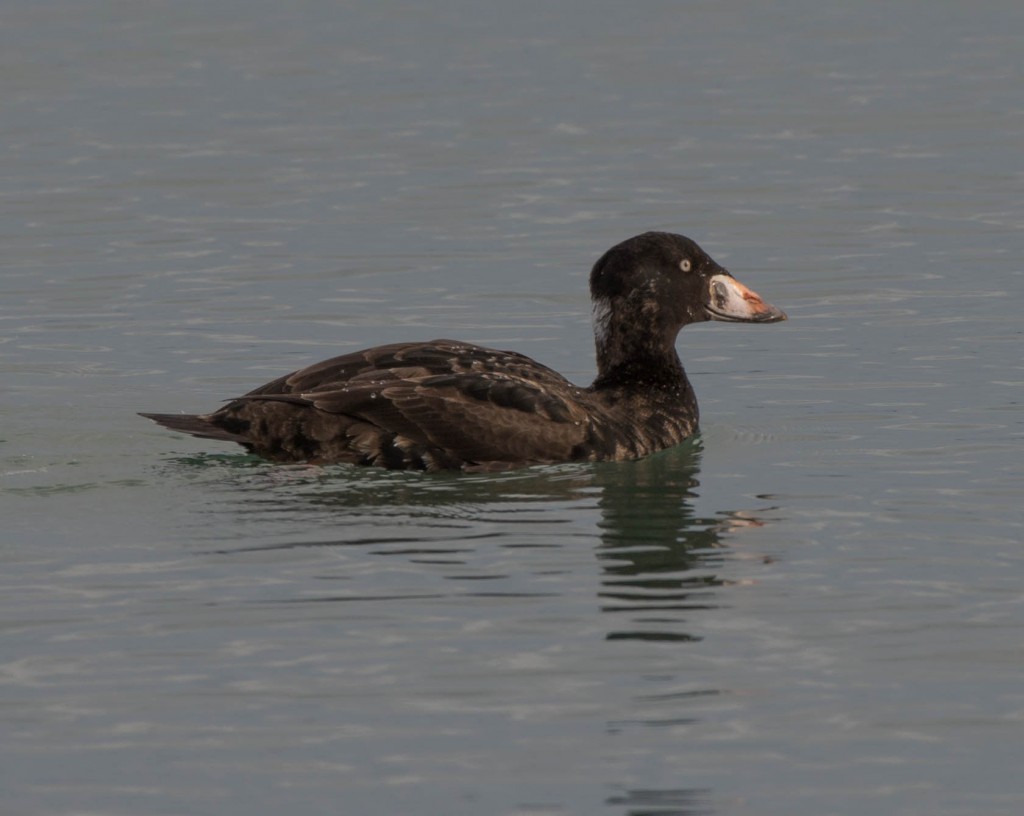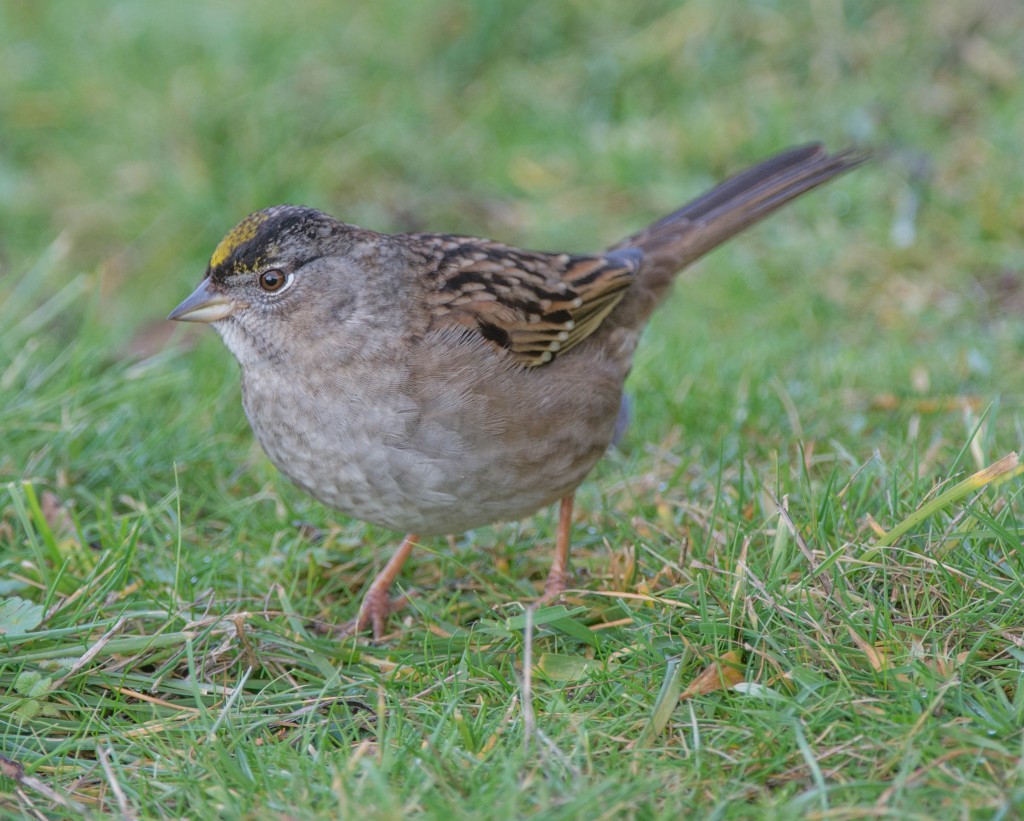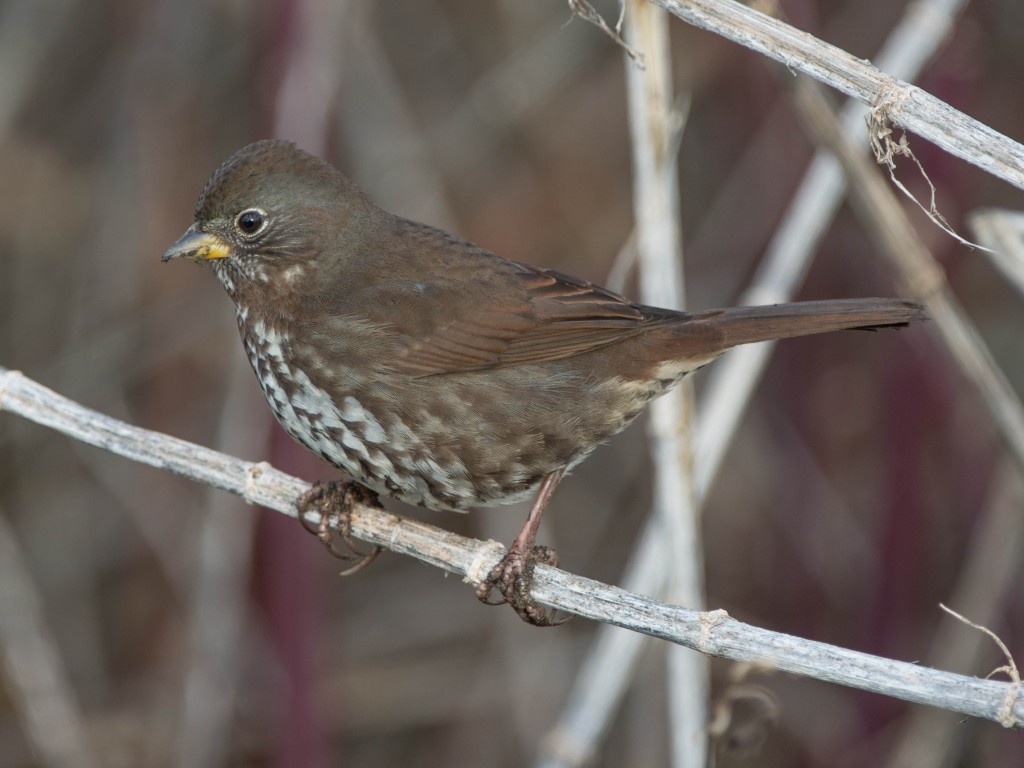January 16 was to be my best of three consecutive days of birding. After my morning walk and coffee I drove by the Cap Sante Marina mid-morning and saw a male Common merganser in the basin and very near the shore next to which I was driving. The problem… I didn’t have my good camera with me! I hurried home, retrieved my camera and returned to the marina to find the Common merganser had disappeared. However there were now four Hooded mergansers (two pairs) in the yacht basin. I began taking some photos of them when I noticed a wake coming my way and upon further inspection saw that it was the Common merganser. Unfortunately, this time it swam along the far dock line, eventually disappearing under the dock and later another dock to the east. The bird only had to swim a hundred feet or so underwater and for me to reacquire it would necessitate a walk for me of several hundred yards… if it remained in the same place, which it did not. So I gave up on close shots of the Common merganser.
The Hooded mergansers wouldn’t cooperate either so I eventually headed for my car, but then a Common loon showed up on the scene. This was enough to keep me around for awhile and I was able to maneuver so that I got some fairly good photos of it.
After I had exhausted my photo opportunities for waterfowl in the marina I set off for March’s Point. While driving along March’s Point Road I encountered a Belted kingfisher sitting in the light and with no intervening branches. I took a few photographs of it before moving on.
My next photographic acquisition was a Song sparrow along March’s Point Road, but in the interest of brevity I’m not going to post one of those photographs. However, shortly after leaving March’s Point Road I encountered a flock of about 8-10 Bushtits, birds I only rarely see and even more rarely get to photograph due to their rapid movements (in what are usually low-light conditions). However these were in direct sunlight so I enjoyed a relatively long session with them.
Bushtits are extremely gregarious and travel in flocks of from about 5-6 all the way up to maybe 20 or more. They seldom remain in one place very long but roll through the terrain from one set of trees/bushes to the next.
And now I’m going to backtrack a little. I mentioned the male Common merganser I found in the marina. I didn’t get what I consider good bird photographs, but I did get some good artistic photographs, one of which appears below.

